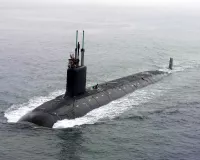The MS Stockholm, a Swedish American Line ocean liner later converted to a cruise ship, is most known for its collision with the Andrea Doria in July 1956. The collision, occurring off the coast of Nantucket, Massachusetts, resulted in the sinking of the Andrea Doria and the loss of 46 lives. The incident remains a significant event in maritime history.
1941: Stockholm (1941) sunk
The 1941 Stockholm was sunk during the war. The proceeds from selling Stockholm III to the Italians were later used to finance the construction of the ship after the 1941 Stockholm was sunk.
1944: Ship ordered
In 1944, the ship was ordered.
September 1946: Launched as Stockholm
In September 1946, the ship was launched as Stockholm by Götaverken in Gothenburg for the Swedish America Line (SAL).
February 1948: Maiden voyage
On 21 February 1948, the Stockholm made her maiden voyage from Gothenburg, under the command of Captain Waldemar Jonsson, arriving in New York on March 1.
1952: MS Kungsholm joins transatlantic route
In 1952, the new MS Kungsholm joined the Stockholm on the transatlantic route.
1953: Refit expands capacity and occasional cruises begin
In 1953, a refit expanded the Stockholm's capacity to 548 people and the Swedish American Line scheduled her for occasional cruises starting in 1953 out of Morehead City, North Carolina.
February 1955: Deportation of Arne Pettersen
In February 1955, the Stockholm was used to deport Arne Pettersen, the last person to go through Ellis Island, to Gothenburg, Sweden.
July 1956: Collision with Andrea Doria
In July 1956, the Stockholm was involved in an accidental collision with the Andrea Doria off the coast of Nantucket, Massachusetts, resulting in the sinking of the Italian liner and 46 fatalities.
1956: Refit adds cinema and pool
A later refit in 1956-57 added a cinema to the deck forward end of the main superstructure, and an outdoor pool aft.
1957: MS Gripsholm joins transatlantic route
In 1957, the new MS Gripsholm started sailing.
May 1959: Ship sold
In May 1959, the Stockholm was sold to an unidentified German company.
1959: Ship's bell recovered
In 1959, Stockholm's damaged ship's bell was recovered from the wreck site of the Andrea Doria.
January 1960: Transferred to East German government
On 3 January 1960, the Stockholm was transferred to the East German government for 20 million Swedish krona, renaming the ship Völkerfreundschaft.
1960: Ship transferred to new company
In 1960, the ship was transferred to the new company.
1961: Ports restricted due to Berlin Wall
In 1961, after the Berlin wall went up, all ports were restricted to communist countries only, which greatly limited sailing routes for the Völkerfreundschaft.
1964: Management under Free German Trade Union Federation
In 1964, the ship was put under the management of the Free German Trade Union Federation.
1967: Stena Line charter begins
In 1967, Stena Line chartered the ship for Swedish passengers for half of the year, continuing annually until the ship was sold in 1985.
1968: Collision with Bundesmarine submarine chaser Najade
In 1968, the Bundesmarine submarine chaser Najade rammed the Völkerfreundschaft during its rescue of East German defector Manfred Semmig.
1975: Continued losses
Between 1975 and 1980, losses reached 70 million East German marks.
1979: Appearance in Die Rache des Kapitäns Mitchell
In 1979, the Völkerfreundschaft appeared as the luxury liner Astoria in the East German film "Die Rache des Kapitäns Mitchell".
1980: Continued losses
Between 1975 and 1980, losses reached 70 million East German marks.
January 1983: Collision with West German Navy submarine U-26
On 21 January 1983, the Völkerfreundschaft collided with West German Navy submarine U-26 in the Baltic Sea off the Fehmarn Belt.
1985: Transferred to Panamanian company and renamed
In 1985, the Völkerfreundschaft was transferred to a Panamanian company, Neptunas Rex Enterprises, and her name was reduced to Volker and laid up in Southampton, England. The ship was renamed Fridtjof Nansen and used as a barracks ship in Oslo for asylum seekers in Norway.
1985: Ship sold due to age and losses
In 1985, the ship was sold due to its age and continued losses.
1989: Sold to Italian Star Lauro Lines
In 1989, the ex-Stockholm was officially sold to the Italian Star Lauro Lines, with intentions to convert her into a luxury cruise ship.
1993: Towed to Genoa
In 1993, the ship was towed to a shipyard in Genoa, Italy, after remaining in Oslo as the Fridtjof Nansen.
1994: Refit completed and renamed
Following the completion of the refit in 1994, the ship was named Italia I, then Italia Prima, she later sailed as Valtur Prima primarily to Cuba.
2002: Chartered by Festival Cruises
In 2002, the ship was chartered by Festival Cruises for a five-year period and was renamed Caribe.
2004: Sold to Portuguese-based operator
In 2004, the plans to sail to Cuba fell through and the Caribe was sold to a Portuguese-based operator.
October 2006: Caught in hurricanes on transatlantic cruise
In October 2006, on a transatlantic cruise, the Athena was caught in two violent hurricanes, causing a fatality and passenger unrest.
December 3, 2008: Attack by pirates in Gulf of Aden
On December 3, 2008, the Athena was attacked by pirates in the Gulf of Aden, but the crew prevented boarding and the ship escaped without damage.
2009: Chartered to Phoenix Reisen
In 2009, the Athena was chartered to German cruise operator Phoenix Reisen and repainted in the company colors.
2013: Bought by Portuscale Cruises and renamed Azores
Early in 2013, the Athena was bought by Portuscale Cruises and renamed Azores, undergoing a revamp in Marseille.
January 2015: First voyage to the Caribbean
In January 2015, the Azores' first voyage under Cruise & Maritime Voyages (CMV) was from Avonmouth Docks to the Caribbean.
April 2015: Blocked from port due to unpaid debts
In April 2015, the Azores was blocked from port due to unpaid debts, stranding passengers aboard until the issue was resolved.
March 2016: Renamed Astoria by CMV
In March 2016, the ship was renamed Astoria by Cruise & Maritime Voyages.
March 2016: Service as Astoria begins
In March 2016, the vessel began service as Astoria, sailing with Cruise & Maritime Voyages.
May 2016: Subchartered to Rivages du Monde
From May 2016, the Astoria was subchartered to French tour operator Rivages du Monde.
June 2016: CMV announces Astoria to leave fleet
In June 2016, Cruise & Maritime Voyages (CMV) announced that Astoria would be leaving the CMV fleet after her final cruise on April 27, 2017, from London Tilbury.
February 2017: CMV announces Astoria to remain in fleet until 2018
In February 2017, Cruise & Maritime Voyages (CMV) announced that Astoria would remain in the CMV fleet until 2018.
March 2017: End of subcharter to Rivages du Monde
In March 2017, the subcharter to French tour operator Rivages du Monde ended.
April 27, 2017: Originally scheduled departure from CMV fleet
In June 2016, CMV announced that Astoria would be leaving the CMV fleet after her final cruise on April 27, 2017, from London Tilbury.
2018: Scheduled departure from CMV fleet
In February 2017, Cruise & Maritime Voyages (CMV) announced that Astoria would remain in the CMV fleet until 2018.
December 2019: Astoria's Winter Cruising Begins
In December 2019, Astoria was scheduled to start its winter cruising in the Sea of Cortez from Puerto Peñasco, Mexico.
January 2020: Winter Cruising Ends Due to Delays
In January 2020, Astoria's winter cruising was cut short due to unspecified delays in dry dock.
June 2020: Crew Hunger Strike and Vessel Arrest
In June 2020, during the COVID-19 pandemic and CMV's bankruptcy, 47 Astoria crew members began a hunger strike, demanding owed wages and repatriation. The vessel was then arrested by the UK Maritime & Coastguard Agency for attempting to leave UK jurisdiction without repatriating stranded foreign crew.
September 2020: Stockholm's bow and anchors discovered
In September 2020, Atlantic Wreck Salvage announced that their ship, D/V Tenacious, had discovered Stockholm's bow and anchors near Andrea Doria's final resting place.
December 2020: Astoria Towed to Rotterdam
In December 2020, Astoria was towed to Rotterdam and laid up.
2020: Cruise & Maritime Voyages ceases operations
In 2020, Cruise & Maritime Voyages ceased operations due to the COVID-19 pandemic, leading to the Astoria being laid up.
March 2021: Astoria Put Up for Auction
On March 1, 2021, Astoria was put up for auction with a minimum sale price of €10 million.
July 2021: Astoria Purchased by The Roundtable LLC
In July 2021, Astoria was purchased by The Roundtable LLC, affiliated with Brock Pierce, who planned to return it to service.
July 2021: No Offers Until July 2021
Until July 2021, Astoria received no offers during the auction. The ship remained in custody.
February 2022: Ship Breaks Loose and Crashes
In February 2022, Astoria broke loose from her moorings during a storm and crashed into the container ship Seatrade Orange.
December 2022: Astoria Listed for Sale on Yachtworld
By December 2022, Astoria was listed for sale on Yachtworld, reduced to $5 million.
January 2023: Owner Attempts to Sell for Continued Trading
In January 2023, despite rumors of a scrap sale, Astoria's owner confirmed their attempts to sell the ship for continued trading.
June 2025: Astoria Sold for Scrap
In June 2025, Astoria was auctioned again and sold for €200,000 to Galloo, a ship scrapping company.
July 2025: Towed to Ghent for recycling
On 4 July 2025, the Astoria was towed from Rotterdam to Ghent for recycling.
2025: Ship's bell removed
In 2025, Stockholm's ship's bell was removed when the ship arrived at Ghent for scrapping.
Mentioned in this timeline

A submarine is a watercraft capable of independent operation underwater...
Germany officially the Federal Republic of Germany is a Western...
North Carolina is a Southeastern U S state the th-largest...
Florida a state in the Southeastern United States is largely...
France officially the French Republic is primarily located in Western...
Portugal is a country located on the Iberian Peninsula in...
Trending

1 month ago Trump Withdraws Nominee for Top IRS Lawyer Amidst Loomer Controversy.
2 months ago Orlovsky urges more Derrick Henry carries; Gronkowski warns AFC Contender faces disaster

16 days ago Yankees and Mets compete for Cody Bellinger; Yankees consider Kyle Tucker.

Alan Jackson is a highly successful American country music singer-songwriter celebrated for his neotraditional country sound He distinguishes himself by...

3 months ago Hilary Duff Celebrates Birthday, Attends Fashion Week, and Debuts Bold Manicure.
2 months ago Karoline Leavitt Blasts Reporter Over 'Bulls--t' Questions; White House Responds Wildly.
Popular

Candace Owens is an American conservative political commentator and author...

Ilhan Omar is an American politician currently serving as the...

XXXTentacion born Jahseh Dwayne Ricardo Onfroy was a controversial yet...

Frederick Christ Trump Sr - was an American real estate...

Oprah Winfrey an American talk show host television producer actress...

Charles James Charlie Kirk was a prominent American right-wing political...